- Kyoto is famous for Japanese “Wa” (harmony), but…
- A row of large ginkgo trees past the entrance
- After passing through the rows of ginkgo trees, you will find a Japanese garden.
- Experience the “aristocratic culture” of Japan at the Memorial Hall.
- No one would have guessed that the admission fee would be “free”.
- Access & Business Hours
Kyoto is famous for Japanese “Wa” (harmony), but…
I want to go to Kyoto! But…
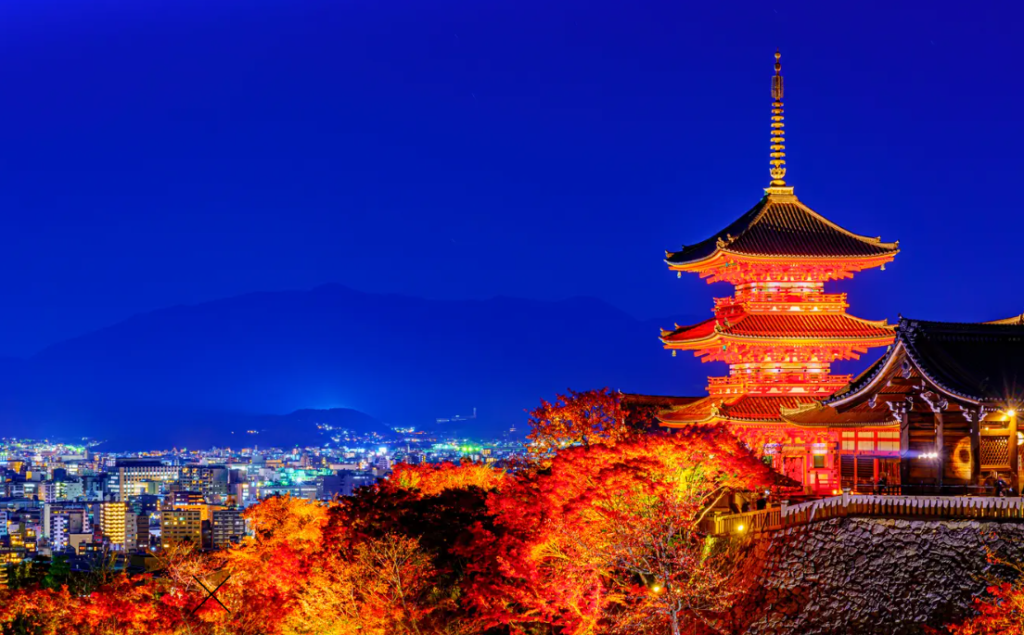
Kyoto is famous for sightseeing if you want to experience Japanese “Wa” culture,
There are many other tourists and many sightseeing spots just because it is a popular spot for sightseeing in Japan,
However, since it is a popular spot in Japan, there are many other tourists and many sightseeing spots, and those who do not want to be cramped with a lot of preparation,
If you don’t want to be cramped and have to do a lot of preparation, or if you are interested in Japanese-style spots that are not well-known among Japanese people, this is the place for you.
A row of large ginkgo trees past the entrance
Close to Shinjuku (approx. 30 min.)
Shinjuku is the capital of Japan. As the capital of Japan, you can experience the latest in Japanese fashion, food, entertainment, and other aspects of Japanese culture.
From Shinjuku, you can reach “Ootaguro Park” in about 30 minutes by train and on foot.
“Little Kyoto” that can be seen after passing through a residential area
A 10-minute walk from Ogikubo Station on the JR and Tokyo Metro lines, “Little Kyoto” can be seen after passing through a quiet residential area. At the entrance, good old-fashioned Japanese culture will welcome you from now on.
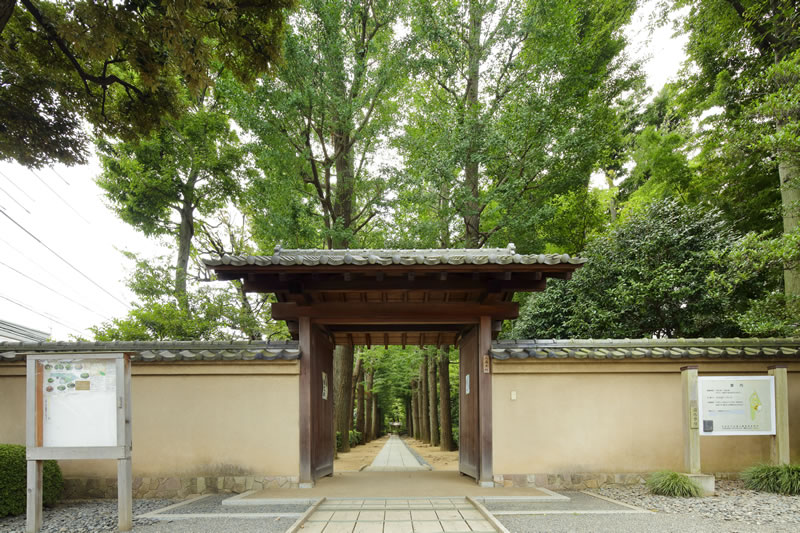
Once you pass through the main gate, you will see rows of large ginkgo trees over 100 years old, as well as other giant trees such as zelkova, red pine, and shinoki (Japanese cypress). Many people first take dozens of photos here.
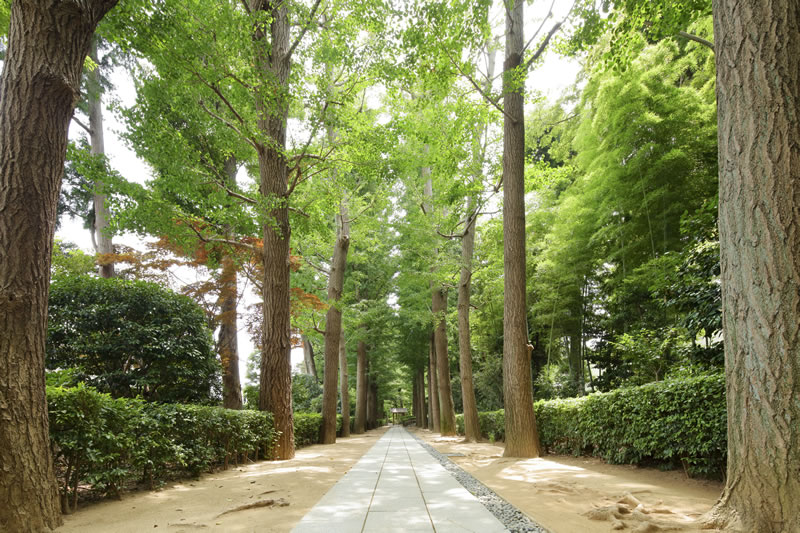
After passing through the rows of ginkgo trees, you will find a Japanese garden.
This is the best photo spot Japanese garden
As soon as you are overwhelmed by the rows of ginkgo trees, there is a “stream” that takes advantage of the difference in elevation of this land, and the soothing elements of trees and water will stimulate your senses at once.
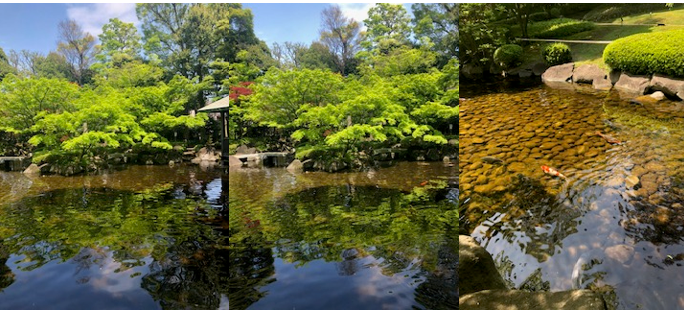
Experience the “aristocratic culture” of Japan at the Memorial Hall.
Memorial Hall of Mr. Ootaguro, a registered tangible cultural property
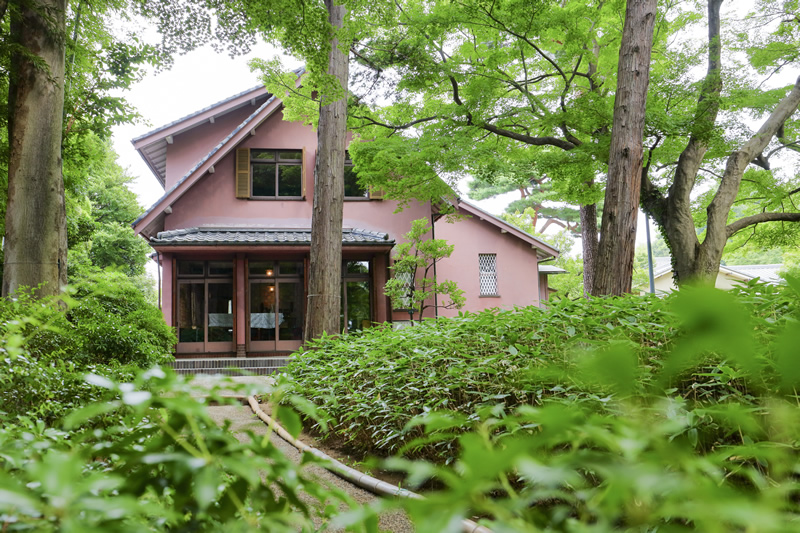
After passing through the Japanese garden, a slightly pinkish building can be seen among the green trees.
This building was built by Motoo Ootaguro (January 11, 1893 – January 23, 1979), a well-known pioneer of music criticism in Japan.
In this memorial hall, Mr. Ootaguro’s favorite Steinway piano and gramophone are on display,
Visitors can experience the so-called “aristocratic culture” of Japan at that time.
The museum’s interior will make you feel as if you have stepped back in time to the 1900s.
This memorial hall is a registered tangible cultural property of Japan.
Unfortunately, photography is not allowed inside the museum, so please come and see for yourself.
No one would have guessed that the admission fee would be “free”.
Other seasonal events are also held.
Other events are also held seasonally, especially during the cherry blossom season in spring, when a limited time event to light up the fresh greenery is held,
Visitors can enjoy the cherry blossoms at night. During the fall foliage season, visitors can experience the four seasons by viewing the beautiful autumn leaves during the daytime,
The park is also illuminated at night to create a fantastic atmosphere, with the autumn leaves reflected on the water surface.
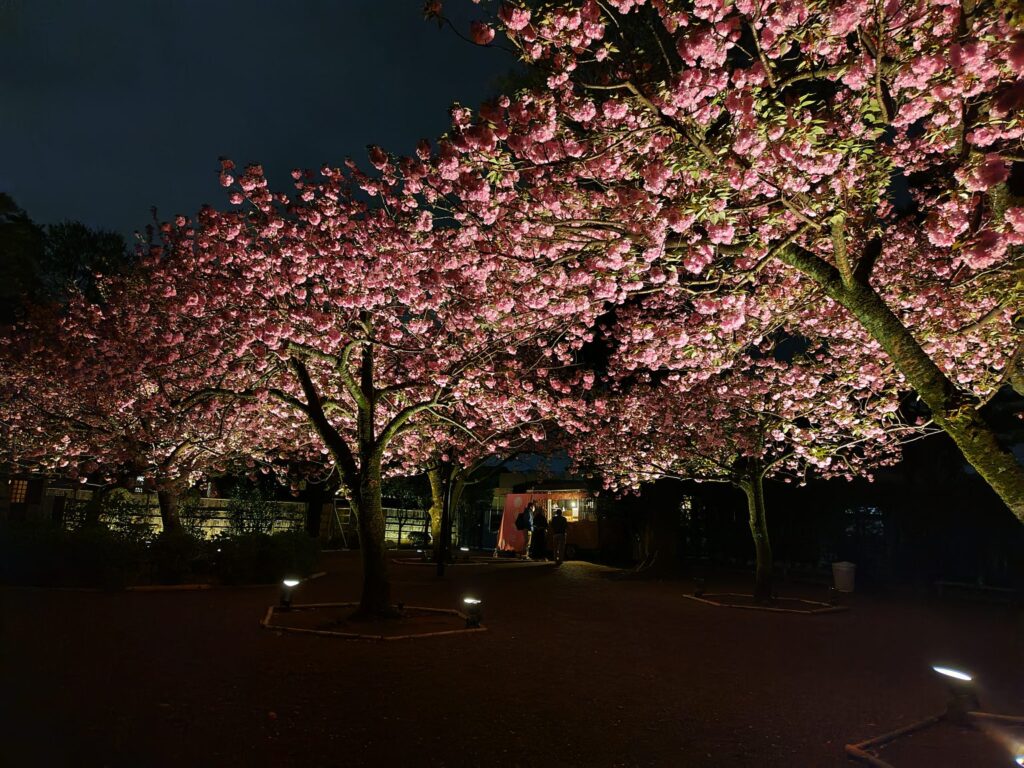
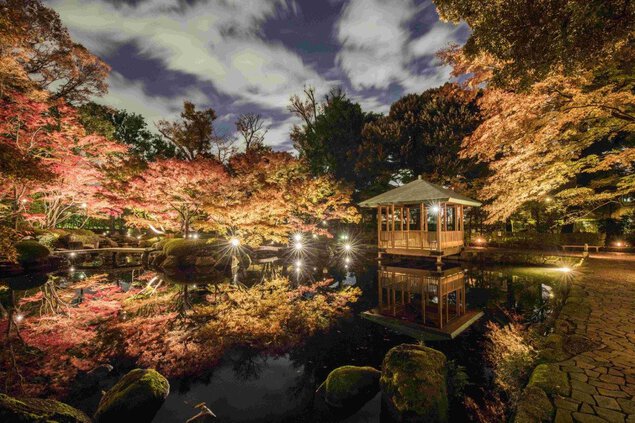
Admission to the park is free for those who want to experience “Japanese” culture.
Daitaguro Park, introduced here, is a secluded spot where you can enjoy the four seasons and experience a time-slip back to the 1900s, while being close to the city center.
Last but not least, admission to Ootaguro Park is free (except for the nighttime admission during the illumination of the park during limited periods of the year).
Ootaguro Park is one of the few places where you can experience Japanese “Wa” culture in a casual and affordable way, so please stop by.
Access & Business Hours
Access
Address: 3-33-12 Ogikubo, Suginami-ku, Tokyo 167-0051
10 minutes walk from South Exit of Ogikubo Station on JR and Tokyo Metro Marunouchi Line.
There is no parking in the park. Please use nearby toll parking lots.
If you are coming by bicycle, please use the bicycle parking lot on the right side facing the main gate.
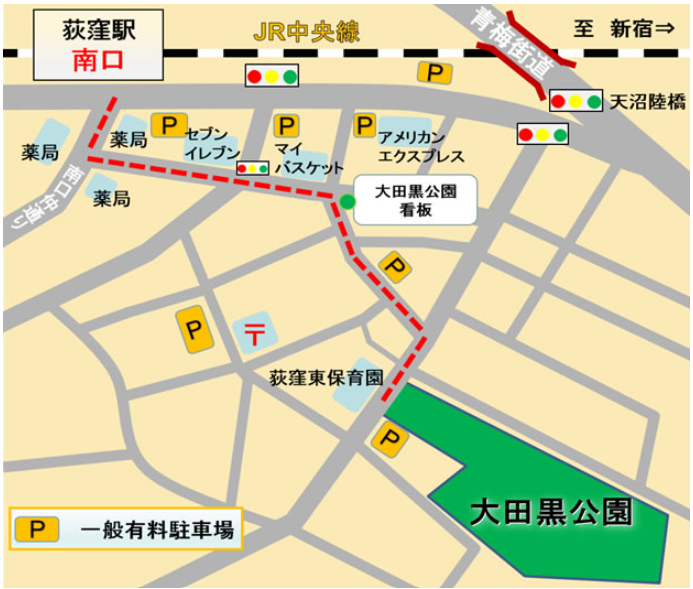
Website URL:https://hakone-ueki.com/sub/
Ootaguro Park Management Office:Tel.03-3398-5814
Business Hours・Other
Open:January 2 – December 28
Opening hours:9:00 – 17:00 (admission until 16:30)
Area:8,972.31㎡


